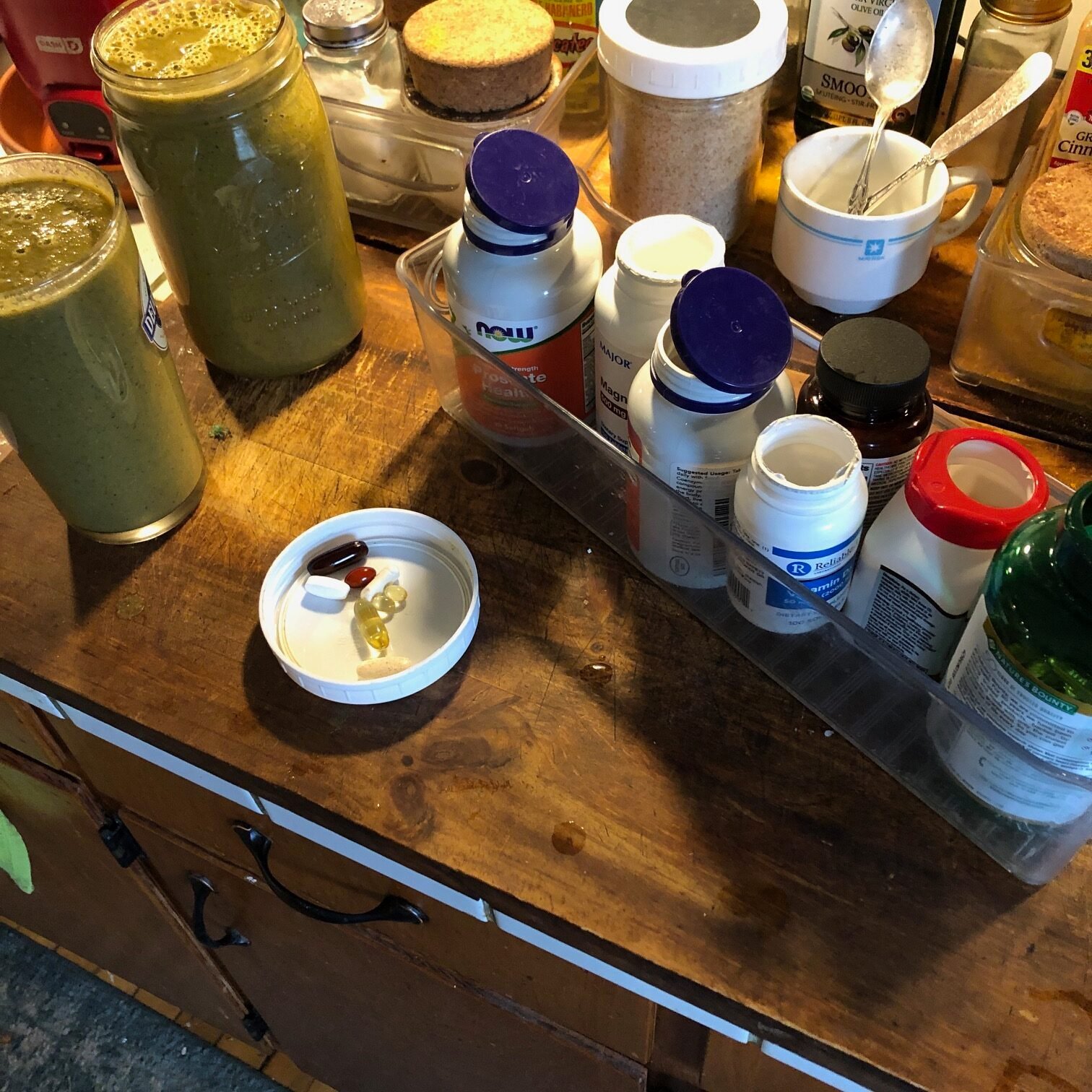Understanding the Link Between Ehlers-Danlos Syndrome & Postural Orthostatic Tachycardia Syndrome
Ehlers-Danlos Syndrome (EDS) and Postural Orthostatic Tachycardia Syndrome (POTS) are two chronic conditions that frequently overlap, affecting connective tissues and autonomic nervous system function. Many individuals diagnosed with EDS experience symptoms associated with POTS, and vice versa. Since both conditions fall under dysautonomia, they disrupt the body’s ability to regulate involuntary functions like blood pressure, heart rate, and circulation.
Understanding their connection can help patients and healthcare providers approach symptom management more effectively. Recognizing the shared mechanisms between EDS and POTS is essential for developing targeted treatments that improve quality of life.
Exploring the Relationship Between EDS and POTS
The link between EDS and POTS lies in connective tissue instability and autonomic dysfunction. Many individuals with hypermobile Ehlers-Danlos Syndrome (hEDS) experience difficulty maintaining vascular tone, meaning their blood vessels may not constrict efficiently upon standing. This can result in poor circulation, blood pooling, and excessive heart rate fluctuations, common characteristics of POTS.
Since connective tissues support blood vessels, weakened tissues in EDS can contribute to circulatory dysfunction, increasing the likelihood of orthostatic symptoms. Additionally, nervous system dysregulation in POTS can intensify joint pain, fatigue, and digestive complications—symptoms frequently experienced by those with EDS.
What is Ehlers-Danlos Syndrome (EDS)?
Ehlers-Danlos Syndrome (EDS) is a genetic connective tissue disorder that disrupts collagen production and function, resulting in widespread complications throughout the body. Collagen plays a fundamental role in providing structural support to tissues, organs, joints, and blood vessels. When faulty, it leads to skin elasticity issues, joint instability, and vascular fragility, impacting both mobility and overall health.
Variability Among EDS Subtypes
EDS is a spectrum disorder, meaning its symptoms and severity vary significantly based on the specific subtype. Some forms primarily affect joint flexibility, while others lead to severe vascular complications. Despite these differences, all forms of EDS share common characteristics related to connective tissue fragility, making early identification and management crucial for long-term health.
The Role of Collagen in EDS
Collagen is responsible for reinforcing connective tissue, ensuring that the body’s structures remain stable and resilient. When mutated, collagen fails to properly support tissue integrity, leading to loose joints, soft skin, and increased injury susceptibility. The effects of collagen dysfunction extend beyond mobility issues, often contributing to chronic pain, poor wound healing, and circulatory instability.
Understanding the underlying mechanisms of EDS helps individuals and healthcare providers develop personalized management strategies, focusing on joint protection, physical therapy, and autonomic regulation, especially in cases where EDS is linked to Postural Orthostatic Tachycardia Syndrome (POTS).
EDS and Autonomic Dysfunction
Among the various EDS subtypes, Hypermobile Ehlers-Danlos Syndrome (hEDS) is most frequently associated with autonomic dysfunction. Many individuals with hEDS experience dysautonomia, which impacts the autonomic nervous system’s ability to regulate heart rate, blood pressure, and circulation. This connection explains why POTS (Postural Orthostatic Tachycardia Syndrome) is commonly seen in those with hEDS, often leading to lightheadedness, tachycardia, and exercise intolerance.
Key Symptoms of EDS
Ehlers-Danlos Syndrome (EDS) presents with a diverse range of symptoms, affecting multiple body systems. While the severity varies among individuals, some hallmark features are consistently observed.
Joint Hypermobility
EDS is often characterized by excessive joint flexibility, resulting from weakened connective tissues. This leads to:
- Frequent joint dislocations and subluxations, particularly in the shoulders, knees, and fingers.
- Chronic instability, making daily movements unpredictable and sometimes painful.
- Musculoskeletal pain, as overworked muscles compensate for joint laxity.
Skin Hyperextensibility
Individuals with EDS often experience skin that stretches beyond normal limits, feeling soft or velvety to the touch. Additional concerns include:
- Easy bruising, even with minor impacts or pressure.
- Delayed wound healing, increasing susceptibility to scars and tissue damage.
- Fragile skin, prone to cuts and abrasions due to reduced structural integrity.
Chronic Pain and Fatigue
EDS-related pain is often multifaceted, affecting muscles, joints, and nerves. Many individuals experience:
- Widespread musculoskeletal discomfort, often aggravated by repetitive movements.
- Chronic fatigue, linked to inefficient energy usage and muscular strain.
- Poor proprioception, leading to balance and coordination difficulties.
Poor Wound Healing and Vascular Fragility
Collagen abnormalities in EDS weaken vascular structures, leading to:
- Increased bruising susceptibility, even with minor trauma.
- Slower healing processes, making wounds more prone to reopening.
- Potential bleeding disorders, especially in rarer vascular EDS subtypes.
Effective symptom management requires a proactive approach, including physical therapy, hydration strategies, and specialized interventions to minimize complications and improve daily function.
Understanding the connection between EDS and POTS is crucial for effective symptom management, as both conditions require strategic lifestyle adaptations, hydration, physical therapy, and autonomic regulation to improve quality of life.

What is POTS?
Postural Orthostatic Tachycardia Syndrome (POTS) is a form of dysautonomia that disrupts the autonomic nervous system’s ability to regulate blood circulation. When standing, individuals with POTS experience an excessive increase in heart rate, often 30 beats per minute or more above their baseline, accompanied by symptoms such as dizziness, lightheadedness, and fatigue.
How POTS Affects Circulation
In healthy individuals, the body automatically adjusts blood pressure and heart rate when shifting from sitting to standing, ensuring stable circulation. However, in POTS patients, this regulation fails, leading to blood pooling in the lower extremities and an insufficient return of blood to the brain. This triggers compensatory tachycardia, as the heart works harder to maintain adequate oxygen delivery.
Common Symptoms
Symptoms of POTS vary in intensity and may fluctuate throughout the day. The most common signs include:
- Exercise intolerance, where physical exertion worsens symptoms.
- Dizziness or lightheadedness when standing, often accompanied by nausea.
- Heart palpitations or an abnormally fast heartbeat upon postural changes.
- Chronic fatigue, making daily activities more challenging.
- Brain fog, affecting concentration and memory.
How POTS Disrupts Circulation
- Blood pooling in extremities – Causing sluggish circulation and low blood pressure
- Rapid heart rate (tachycardia) upon standing – Leads to dizziness and weakness
- Temperature regulation issues – Difficulty adapting to heat or cold
- Digestive disturbances – Slowed gastric motility affecting nutrient absorption
Since POTS is frequently linked to autonomic dysfunction in EDS, patients with both conditions often require specialized symptom management strategies to stabilize heart rate, blood pressure, and overall circulatory health.
The EDS and POTS Connection
Research indicates a high prevalence of Postural Orthostatic Tachycardia Syndrome (POTS) among individuals with Ehlers-Danlos Syndrome (EDS), particularly those with Hypermobile EDS (hEDS). Estimates suggest that up to 50% of people diagnosed with hEDS also experience POTS, reinforcing the strong correlation between these conditions.
This overlap is largely due to shared physiological mechanisms, including connective tissue instability, autonomic dysfunction, and vascular tone irregularities. Understanding these connections allows patients and healthcare providers to develop more effective symptom management strategies.
Why Do EDS and POTS Co-Exist?
Several underlying factors explain the frequent coexistence of EDS and POTS. These mechanisms contribute to orthostatic intolerance and circulatory challenges, which are hallmark symptoms of both conditions.
Connective Tissue Weakness
EDS affects collagen and connective tissue integrity, weakening blood vessel tone and elasticity. This results in poor vascular constriction, making it harder for veins to push blood back toward the heart when standing.
Venous Pooling
Due to weakened connective tissue, veins struggle to properly regulate blood flow, leading to blood pooling in the lower extremities. The body compensates by triggering a faster heart rate (tachycardia) to maintain adequate blood pressure and circulation.
Autonomic Nervous System Dysfunction
Both conditions involve irregularities in autonomic nervous system (ANS) function, which disrupts heart rate regulation, blood pressure balance, and vascular tone. This exacerbates orthostatic intolerance, causing dizziness, fatigue, and circulation instability upon standing.
Diagnosis: Identifying EDS and POTS Together
Since POTS and EDS frequently coexist, a comprehensive diagnostic approach is essential for accurate identification and treatment planning. Physicians must evaluate both connective tissue integrity and autonomic function to assess the presence of each condition.
Clinical Evaluation
A detailed patient history is crucial, as physicians look for signs of joint hypermobility and autonomic dysfunction during physical examinations.
Diagnostic Criteria for hEDS
To diagnose Hypermobile EDS, specialists often assess:
- Beighton Score – A scoring system measuring joint hypermobility
- Family History of hEDS – Genetic predisposition is often considered
- Systemic Manifestations – Including skin hyperextensibility, chronic pain, and tissue fragility
Diagnosing POTS
To confirm Postural Orthostatic Tachycardia Syndrome, healthcare providers rely on:
- Tilt Table Test – Evaluates blood pressure and heart rate changes when shifting from lying down to standing
- Active Stand Test – Observes whether heart rate increases by 30+ bpm in adults or 40+ bpm in adolescents within 10 minutes of standing, without a significant drop in blood pressure
Since both conditions can significantly impact quality of life, early identification and multidisciplinary symptom management are crucial for improving patient outcomes.
Managing EDS and POTS Symptoms Together
Because Ehlers-Danlos Syndrome (EDS) and Postural Orthostatic Tachycardia Syndrome (POTS) often co-exist, effective management strategies require a comprehensive approach that addresses circulatory stability, connective tissue support, and autonomic regulation. Lifestyle modifications, targeted medications, and supportive therapies can improve daily functioning and reduce symptom severity.
Lifestyle Modifications
Making intentional lifestyle changes can significantly reduce symptom flare-ups and enhance long-term stability for individuals managing both EDS and POTS.
Hydration and Electrolyte Balance
Proper hydration is essential for stabilizing blood pressure and circulation in POTS patients. Increasing fluid intake helps mitigate lightheadedness and fatigue by supporting vascular function.
- Drink 2–3 liters of water daily to maintain adequate hydration
- Electrolyte-infused fluids help replenish essential minerals lost through sweat
- Avoid caffeine and alcohol to prevent dehydration
Increased Salt Intake
Sodium plays a vital role in increasing blood volume, which can improve circulatory stability and reduce dizziness in POTS patients.
- Recommended intake: 3,000–5,000 mg sodium/day
- Consume natural sodium sources like sea salt, broth-based soups, and olives
- Monitor salt intake under medical supervision to avoid excessive consumption
Compression Garments
Wearing compression stockings or sleeves can prevent blood pooling in the lower extremities, a common issue for POTS patients. Compression garments help improve circulation and reduce dizziness when standing.
Exercise and Movement
Physical activity must be low-impact to avoid joint strain, while still promoting muscle strength and circulation.
- Recumbent exercises (cycling, swimming) are ideal for avoiding orthostatic stress
- Resistance training strengthens muscles to support weak connective tissues
- Yoga and stretching improve flexibility while reducing physical strain

Medications
Medications can help regulate heart rate, blood pressure, and autonomic function, offering additional relief for POTS and EDS symptoms.
Beta Blockers
These medications help control tachycardia by reducing excessive heart rate fluctuations. Beta blockers can improve exercise tolerance and reduce dizziness.
Fludrocortisone
Supports blood volume regulation by helping retain sodium and fluids, making it beneficial for POTS patients experiencing low blood pressure and dehydration.
Midodrine
This medication stimulates vasoconstriction, increasing blood vessel tone and helping prevent orthostatic drops in blood pressure.
Pain Management
EDS-related joint pain often requires targeted relief strategies:
- NSAIDs (nonsteroidal anti-inflammatory drugs) help reduce inflammation
- Physical therapy-based pain management techniques can improve mobility without excessive medication reliance
Physical Therapy
A structured physical therapy program can help individuals with EDS strengthen connective tissues while simultaneously enhancing vascular stability to improve POTS symptoms.
- Joint stabilization exercises improve mobility and reduce dislocations
- Gradual endurance training supports blood flow regulation
- Postural training minimizes orthostatic intolerance episodes
Nutrition and Supplements
Proper nutrient intake is crucial for muscle function, nervous system support, and autonomic regulation.
Magnesium
Supports muscle and nerve function, helping reduce cramping and autonomic instability.
B-Vitamins
Aid in energy metabolism, improving cellular function and reducing fatigue.
Electrolyte Supplements
Help replenish sodium, potassium, and magnesium lost through sweat, supporting hydration and blood pressure balance.

Living with EDS and POTS
Managing Ehlers-Danlos Syndrome (EDS) and Postural Orthostatic Tachycardia Syndrome (POTS) goes beyond physical symptoms—it requires an adaptive approach to mental well-being, patient advocacy, and social support. Chronic conditions like these can impact emotional health, daily routines, and overall quality of life, making holistic strategies essential for long-term stability.
Mental Health Considerations
Many individuals with EDS and POTS experience heightened anxiety, depression, and emotional exhaustion, stemming from unpredictable symptoms, medical uncertainty, and the challenges of chronic illness. These conditions often require ongoing management, which can sometimes lead to feelings of frustration, isolation, and loss of control.
Strategies for Supporting Mental Health
- Counseling and Therapy – Working with a licensed therapist can provide coping strategies for stress management, emotional resilience, and medical anxiety.
- Peer Support Groups – Engaging with others who share similar experiences can be validating and empowering, helping individuals feel less alone in their struggles.
- Mindfulness Practices – Techniques like meditation, deep breathing, and progressive muscle relaxation can reduce stress and nervous system overstimulation, which may worsen autonomic dysfunction.
- Journaling and Expressive Outlets – Writing down experiences, symptoms, and emotional responses can help process challenges and build self-awareness.

Patient Advocacy and Support
Navigating EDS and POTS diagnoses, treatments, and medical care can feel overwhelming. Advocacy organizations offer educational resources, research updates, and patient-led initiatives to help individuals connect with experts, build awareness, and access community support.
Trusted Advocacy Organizations
- The Ehlers-Danlos Society – Provides comprehensive research, diagnostic guides, and international advocacy efforts.
- Dysautonomia International – Focuses on autonomic nervous system disorders, including POTS, and offers medical education and patient resources.
- Local and Online Communities – Joining forums, social media groups, and in-person events can help individuals connect with others navigating similar health challenges.
The Power of Patient Advocacy
Advocacy isn’t just about seeking better treatment options—it’s about raising awareness, supporting research, and ensuring individuals receive proper medical care. Patients and caregivers can:
- Educate healthcare providers on the unique challenges of EDS and POTS
- Participate in research studies to further scientific understanding of autonomic disorders
- Encourage public awareness campaigns to improve early diagnosis and accessibility to treatment
Living with EDS and POTS is a journey that requires personal adaptation, emotional resilience, and strong community support. By focusing on mental health, advocacy, and informed medical care, individuals can navigate their conditions with confidence and a sense of empowerment.
FAQs: Ehlers-Danlos Syndrome and POTS
1. Why do EDS and POTS often occur together?
EDS affects connective tissue integrity, weakening vascular tone, which can lead to poor circulation, blood pooling, and autonomic dysfunction—all common in POTS. This shared physiological instability explains their frequent overlap.
2. Is POTS considered a symptom of EDS?
While POTS is not officially classified as an EDS symptom, many individuals with Hypermobile Ehlers-Danlos Syndrome (hEDS) experience autonomic dysfunction that leads to POTS symptoms. This suggests a strong association, but POTS can also occur independently.
3. What are the first signs of EDS-related POTS?
Early signs often include dizziness, excessive heart rate increases when standing, blood pooling in the legs, and difficulty regulating blood pressure. Many individuals also experience fatigue, brain fog, and digestive issues, which worsen over time.
4. How is POTS diagnosed in people with EDS?
Diagnosis typically involves:
- Tilt Table Test to assess heart rate and blood pressure responses
- Active Stand Test measuring a 30+ bpm heart rate increase in adults (or 40+ bpm in adolescents) within 10 minutes of standing
- Patient history and clinical evaluation to determine autonomic instability
5. What lifestyle changes help manage EDS and POTS together?
Key lifestyle modifications include:
- Hydration (2–3 liters of water daily) and electrolyte support
- Increased sodium intake (3,000–5,000 mg/day) to stabilize blood pressure
- Compression garments to prevent blood pooling
- Low-impact exercise (recumbent cycling, swimming) to improve circulation and joint stability
6. Can medications help manage EDS and POTS symptoms?
Yes, medications often help regulate heart rate, blood pressure, and autonomic function.
- Beta blockers manage tachycardia and circulation stability
- Fludrocortisone supports blood volume retention
- Midodrine helps increase vascular tone and reduce orthostatic intolerance
7. How does physical therapy help individuals with both EDS and POTS?
Physical therapy can:
- Strengthen connective tissues and stabilize joints, reducing EDS-related pain
- Improve circulation and vascular tone, supporting POTS symptom management
- Enhance postural stability, minimizing orthostatic dizziness and blood pooling
8. Are dietary changes recommended for managing these conditions?
Yes, optimizing nutrition can improve circulatory and nervous system function. Beneficial dietary choices include:
- Magnesium-rich foods (nuts, seeds, dark greens) for muscle and nerve health
- B-vitamins for energy metabolism
- Electrolyte supplements to maintain hydration balance
9. How do EDS and POTS affect mental health?
Chronic illness can lead to anxiety, depression, and medical-related stress. Many individuals benefit from:
- Counseling or therapy for emotional resilience
- Peer support groups for shared experiences and validation
- Mindfulness techniques like meditation and breathing exercises
10. What advocacy resources are available for patients with EDS and POTS?
Organizations such as The Ehlers-Danlos Society and Dysautonomia International offer education, research updates, and patient-led communities to support individuals navigating these conditions.
Conclusion
The relationship between Ehlers-Danlos Syndrome (EDS) and Postural Orthostatic Tachycardia Syndrome (POTS) underscores the intricate interplay between connective tissue integrity and autonomic nervous system function. The overlap between these conditions can create challenges in daily life, but with early diagnosis, strategic lifestyle adjustments, and targeted therapies, individuals can achieve greater symptom control and improved well-being.
Managing EDS and POTS together requires a multidisciplinary approach, incorporating medical care, physical therapy, nutrition, and mental health support. By working with specialists who understand these conditions, patients can develop a personalized treatment plan that addresses both connective tissue instability and autonomic dysfunction.
If you experience symptoms consistent with EDS and POTS, seeking evaluation from a knowledgeable specialist is the first step toward comprehensive care and improved quality of life. With the right support and management strategies, individuals can navigate these conditions with greater stability, functionality, and confidence.



